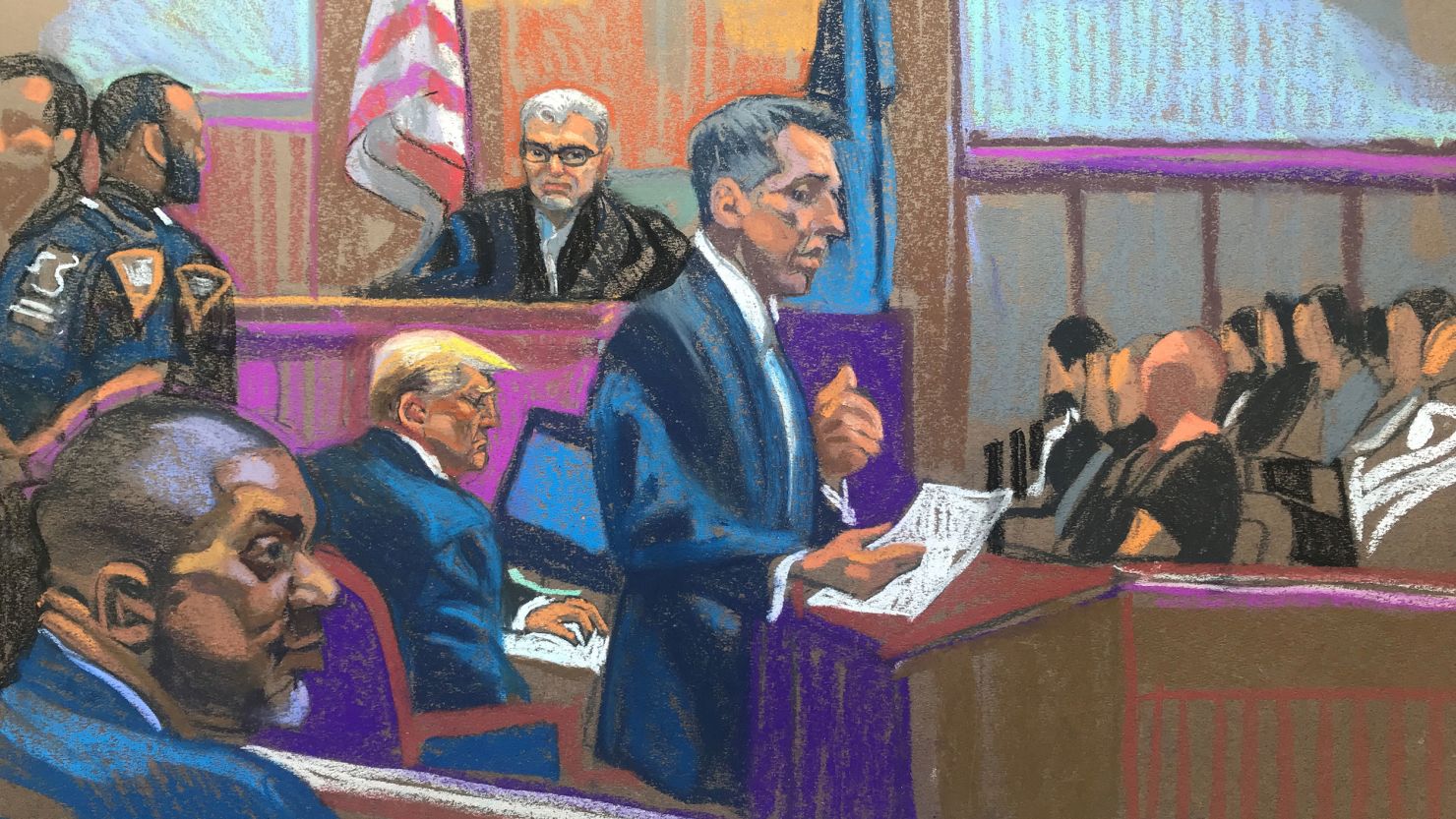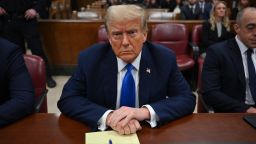Editor’s Note: Norman Eisen is a CNN legal analyst and editor of “Trying Trump: A Guide to His First Election Interference Criminal Trial.” He served as counsel to the House Judiciary Committee for the first impeachment and trial of then-President Donald Trump. The views expressed in this commentary are his own. Read more opinion at CNN.
Opening statements, followed by a few minutes of testimony from the first witness, concluded Monday in the criminal trial of former President Donald Trump. Both the prosecution and defense delivered powerful presentations.

My takeaway: The prosecution has the upper hand based on the evidence and the law, and Trump knows it. He was visibly bowed by the weight of the day. Still, the case is no slam dunk and the defense has plenty to work with.
As expected, prosecutor Matthew Colangelo hammered home his theory of the case: that it is all about election interference and its cover-up. He told jurors that the case is about two things: “an illegal conspiracy to undermine the integrity of a presidential election” and “the steps that Donald Trump took to conceal that illegal election fraud.” Alleged conspiracy and its alleged cover-up: the classic prosecutorial one-two punch.
Let’s start with the alleged conspiracy. Colangelo made the complex simple, going through the chronology of evidence that prosecutors will present to prove the election interference. Like a Shakespearean drama, it had five acts.
ACT ONE: The August 2015 Trump Tower meeting that will be covered by the first witness, former American Media CEO and National Enquirer publisher David Pecker (who was testifying as I began to write). Colangelo said Trump agreed with Pecker and former Trump attorney Michael Cohen at that meeting that they should attempt to influence the election and therefore it proves Trump’s intent — a key issue here. If the prosecution proves that, then they can argue everything else that follows just corroborates that intent.
ACT TWO: The first “catch and kill” payment to Dino Sajudin, a former doorman at Trump World Tower who had a damaging story.
ACT THREE: A payment to another person with a damaging story — Karen McDougal, who alleged she had an affair with Trump.
ACT FOUR: The panic inside the campaign after the release of the “Access Hollywood” tape. Colangelo named Hope Hicks, Trump’s former White House communications director, as the key witness here (and one I know well – I examined her on these identical issues in the first Trump impeachment).
ACT FIVE: The hush money payment to Stormy Daniels.
Then Colangelo came to the alleged elaborate 2017 scheme to cover all that up. Trump reimbursed Cohen with fake income amounting to more than double what Cohen had paid to Daniels (including to cover Cohen’s taxes on the fake income), the prosecutor said.
Colangelo played off of Trump’s notorious cheapness, explaining that he was habitually “frugal” and that “the Trump Organization was not in the practice of paying twice what they owed for anything.” That they did so to repay Cohen, Colangelo argued, provides insight into Trump’s state of mind and “shows just how important it was to him to hide the true nature of Cohen’s illegal payment to Ms. Daniels and the overall election conspiracy.”
Defense attorney Todd Blanche, in the Trump team’s opener, also focused on the question of intent. It’s clear that he views fighting that issue as the key to securing his client’s acquittal. He told the jury that nothing the prosecution might present would directly show whether Trump had the criminal intent to conceal another crime as required for document falsification to be a felony. That is because nothing Trump intended to do was a crime, said Blanche.
He asserted that Trump used entirely legal means to protect himself and his family from “all kinds of salacious allegations,” explaining that “entering into a nondisclosure agreement is perfectly legal.” Moreover, he told jurors, “there’s nothing wrong with trying to influence an election.”
Blanche then tried to suggest that anything done on Trump’s behalf that may not have been by the books was attributable to Trump’s lawyers – but, after the prosecution objected to that line, Judge Juan Merchan struck it from the record, presumably due to an advice of counsel issue. (The judge ruled before the trial that that defense was not available here.) There were repeated objections that were upheld – probably the highest rate of upheld objections to an opening that I have seen in my 30-plus years of practicing law.
Undeterred, Blanche continued by attacking the idea that Trump even knew how the payments to Cohen were supposedly being misclassified in the documents. “Trump had nothing to do with the invoice,” he said. Since Trump didn’t know about it, Blanche suggested, he couldn’t have violated the law – and certainly wasn’t trying to cover up a different crime.
And then, Blanche continued, all the prosecution was left with were fatally flawed witnesses. He instructed jurors that “you cannot make a serious decision about Donald Trump [by] relying on Michael Cohen,” whose “entire financial livelihood depends on President Trump’s destruction” and who has pleaded guilty to perjury. Blanche also hammered away at Daniels, arguing that she could not be believed. He told the jury that to convict Trump they will need to accept Cohen’s and Daniels’ testimony – and they will find that it is unacceptable.
As with Hicks, I also interviewed Cohen for the impeachment and I found that his story never varied on these points. But the jury doesn’t know that and Blanche did what he needed to do to plant the seed. He was effective – every bit as good as Colangelo.
Still, the evidence and the law remain firmly on the DA’s side and Trump would have to be much less smart than he is not to know it.
I was seated on the aisle and Trump passed within a couple of feet of me on his way out at the end of the day. He was hunched over and grim-faced as he left the courtroom, the lines and contours of his visage deeply etched, like a desert landscape.
The weight of the day was not just in the substance of what he heard, but its symbolism. It can’t be easy for the former president, for example, to rise for the judge and jury – he is used to people rising for him. All of that must take a heavy toll.




